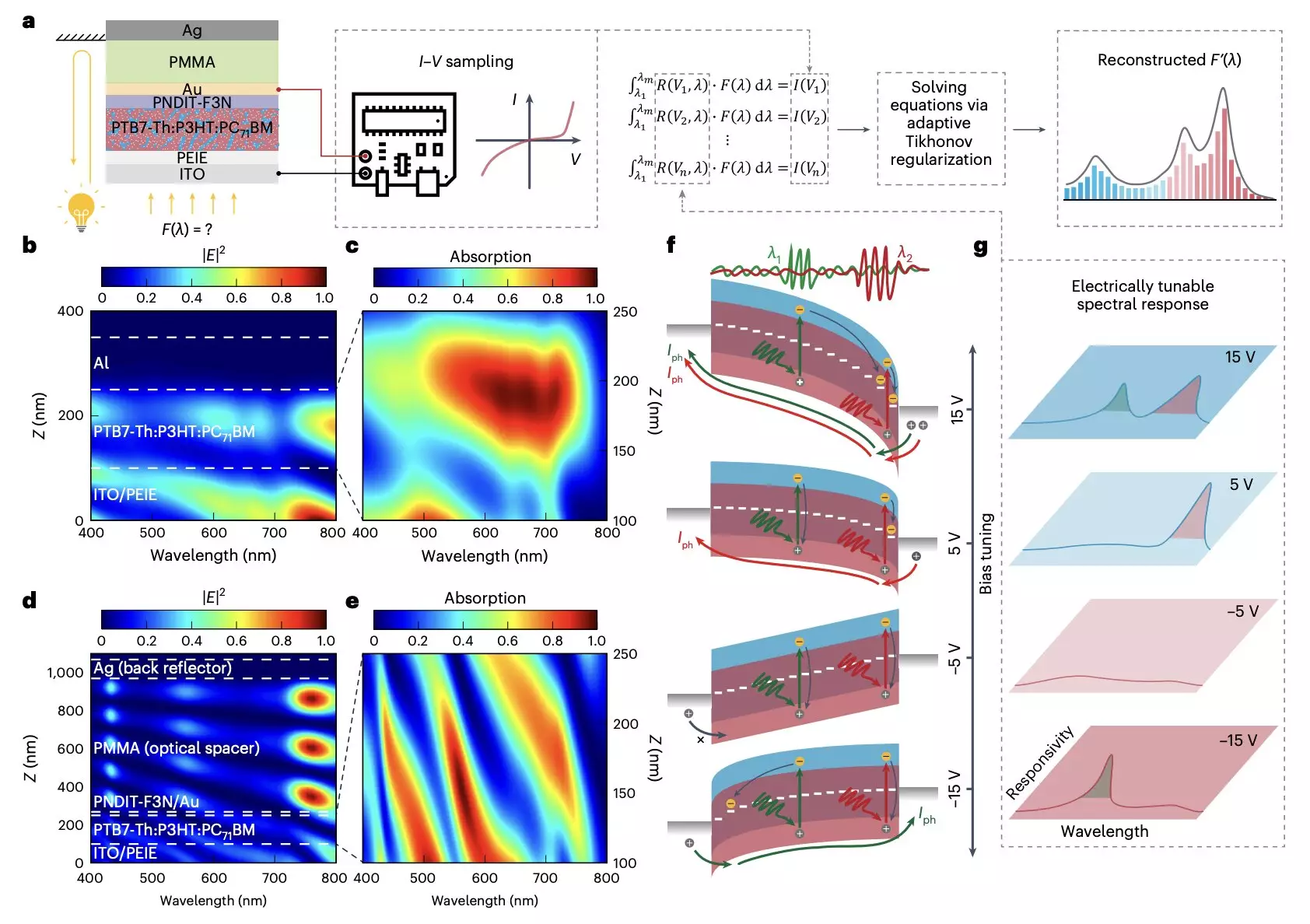Optical spectrometers play a crucial role in various fields such as medical diagnosis, biological analysis, and material characterization. However, traditional spectrometer designs are often bulky and expensive, limiting their use to specialized facilities. In recent years, there has been a push towards developing more compact and affordable optical spectrometers that can be deployed on a large scale.
Researchers at the Chinese University of Hong Kong and other institutes in China have recently made a groundbreaking development in the field of optical spectrometry. They have designed and fabricated a micro-sized, portable, and cost-effective optical spectrometer that could revolutionize the way we approach spectrometry. By utilizing an organic photodetector with a bias-tunable spectral response, they have succeeded in creating a device that is not only compact but also highly efficient.
The key to the success of this new optical spectrometer lies in the manipulation of the wavelength-dependent location of photocarrier generation in photodiodes. By using a trilayer contact comprised of a transparent back contact, an optical spacer, and a back reflector, the researchers were able to create a photomultiplication-type organic photodetector (PM-OPD). This innovative approach allows for the computational reconstruction of an incident light spectrum from photocurrents measured under different bias voltages.
The miniaturized optical spectrometer developed by the researchers demonstrated outstanding performance, operating across the entire visible spectrum regime with a sub-5-nm resolution. Through further experimentation, they were able to fabricate an 8 x 8 spectroscopic sensor array for hyperspectral imaging, showcasing the versatility and potential applications of their design. This breakthrough opens up possibilities for the development of similar micro-sized and cost-effective optical spectrometers that could significantly impact research and medical practices.
The advancement in miniaturizing optical spectrometers represents a significant leap forward in the field of spectrometry. By overcoming the limitations of traditional bulky designs, researchers have paved the way for the development of portable, affordable, and high-performance optical spectrometers. This breakthrough not only opens up new avenues for research and medical applications but also serves as a testament to the power of innovation and collaboration in pushing the boundaries of scientific discovery.


Leave a Reply
You must be logged in to post a comment.